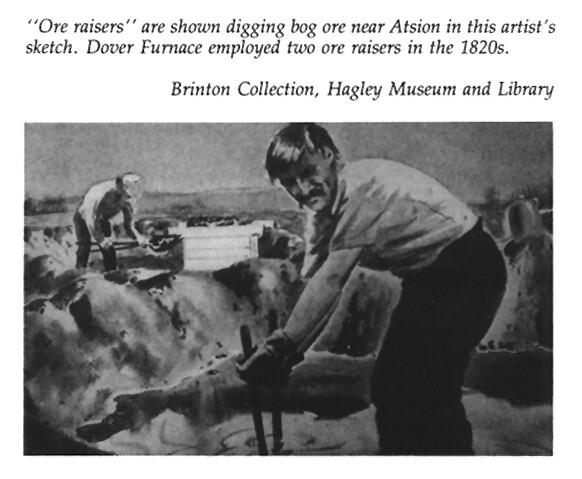Folks:
In conducting my research into the dam and lock at Locks Bridge, I came across some interesting material that did not quite fit into the Locks Bridge thread, but I still want to share with you all. Once you construct an iron furnace, you need three basic ingredients to produce pigs or cast products: charcoal, produced from wood in the nearby forest; iron ore; and lime or other fluxing material. For the ironworks at Batsto and, perhaps, Atsion, here is the1765 agreement struck between Estell and Read:
Here is the agreement between John Estell and Charles Read concerning free access to coal wood and ore lands to obtain two out of the three ingredients required for iron production:
West New Jersey Deeds, Liber X:265
The agreement confirms the use of horses and oxen pulling carriages in conducting logging operations. Estell empowered Read with the right of ingress and egress to obtain the timber and ore and also “for causewaying [great word!] and bridging” on Estell’s lands. Finally, it permitted Read to use available turf on both the charcoal pits and also as sheathing on the collier dwellings.
See the next post for the continuation of this message due to the 10,000-character limit of these forums.
In conducting my research into the dam and lock at Locks Bridge, I came across some interesting material that did not quite fit into the Locks Bridge thread, but I still want to share with you all. Once you construct an iron furnace, you need three basic ingredients to produce pigs or cast products: charcoal, produced from wood in the nearby forest; iron ore; and lime or other fluxing material. For the ironworks at Batsto and, perhaps, Atsion, here is the1765 agreement struck between Estell and Read:
Here is the agreement between John Estell and Charles Read concerning free access to coal wood and ore lands to obtain two out of the three ingredients required for iron production:
West New Jersey Deeds, Liber X:265
This indenture made this twenty-third day of May 1765 Between John Estell of Evesham in the County of Burlington a yeoman of the one part and Charles Read of the City of Burlington Esq. of the other part
Witnesseth that the said John Estell in order to Encourage the erecting of an Iron Works and for and in consideration of the sum of Five shillings to him in hand paid by the said Charles Read the receipt where of is hereby acknowledged
Hath granted bargained and sold and by these presents doth grant bargain and sell unto the said Charles Read his Heirs and Assigns all the coal wood or wood fitt for the making of coal growing or to grow on the lands of the said John Estell in the Counties of Burlington and Gloucester lying near Atsion River, and are the lands purchased of John Monrow and Vincent Leeds and James Inskeep as by their several deeds may appear and also the Ironstone and ore which now is or hereafter may be found on the aforesaid lands and the tops of the saw logs excepting and always reserving such Timber as is fitt for the saw on the same, with ingress and egress into and through the same land with horses oxen carriages and servants and the use of turf or other materials for coaling and Colliers houses and for causewaying and bridging on said lands
TO HAVE AND TO HOLD the above granted priviledges advantages coal wood ore or ironstone to the use of him the said Charles Read his heirs and assigns for ever
In Witness whereof the parties to this indenture have interchangable set their hands and seals the day and year first above written.
John Estell [Seal] sealed and delivered in presence of Rowland Ellis Daniel Ellis, endorsed Be it remembered that on the 23rd day of May 1765 Personally appeared before me John Ladd Esq. one of his majesty's Council for the province of New Jersey John Estell the grantor in the within indenture named and acknowledged that he sealed and delivered the same for the uses and purposes therein mentioned. John Ladd.
The agreement confirms the use of horses and oxen pulling carriages in conducting logging operations. Estell empowered Read with the right of ingress and egress to obtain the timber and ore and also “for causewaying [great word!] and bridging” on Estell’s lands. Finally, it permitted Read to use available turf on both the charcoal pits and also as sheathing on the collier dwellings.
See the next post for the continuation of this message due to the 10,000-character limit of these forums.


 .
.
